So I am sure by now if you are following this adventure, you have realized that when I travel, it is like the “Amazing Race”! I do a lot in a short amount of time! (My motto: you can sleep when you get home!)
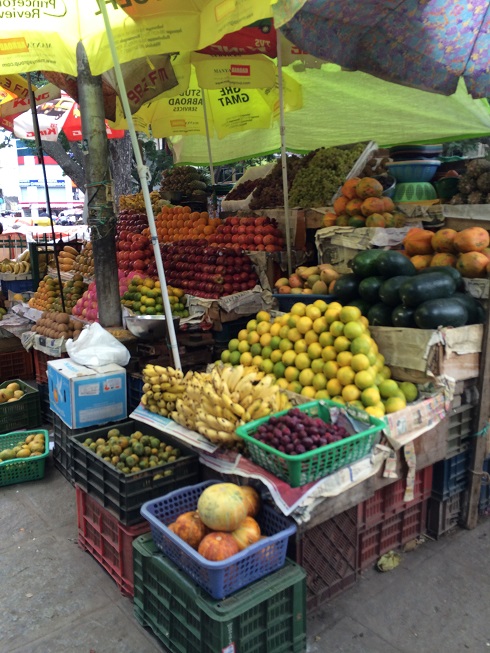
After lunch we made our way through a street market. It was obvious to see that it was Mango season here as not only were mangos a major part of most of the fruit stands, but also many vendors only offered mangos.
There are between 500 and 1000 different mango cultivars in India, but there are 20 most popular. These varieties of mangos are filled with stories of India’s history, culture and even trade problems. The residents of India take great pride in knowing the different varieties.
In our hotel room there were always 3 mangos and a set of knives inviting us to indulge. The hotel spa offered the Mango Melody (Mango sugar scrub, mango body wrap and massage using creamy mango pulp and fresh cream)…sound yummy? It was! I don’t think I have ever smelled anything so delicious! I returned to my room after the 2 ½ hour experience to ask Mike to “smell me”. I could hardly go to sleep because of this incredible smell…It was quite the treat!
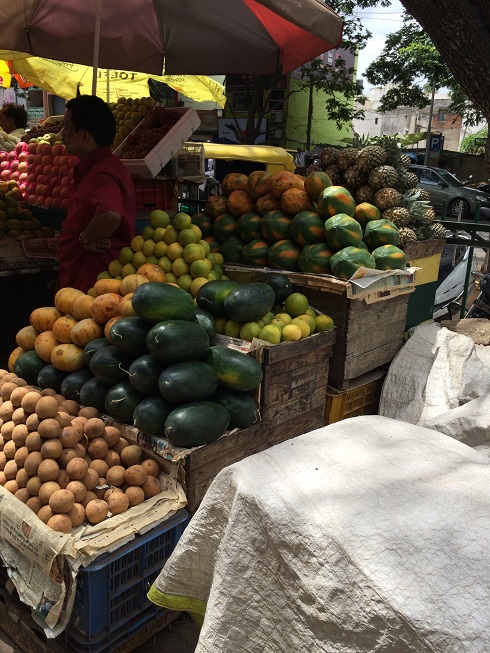
Okay, back to the fruit stands, LOL. The next most stocked fruit is the banana. Bananas grow year-round in India, producing 30 tons annually. They are India’s 7th largest crop. The only foods surpassing banana’s yield are essentials such as rice, buffalo milk, wheat, and—perhaps surprisingly—sugar cane and mangos.
26 out of 29 Indian states grow bananas. Tamil Nadu grows 23 percent of India’s supply, with Maharashtra and Gujarat growing the second and third largest volume, respectively.
India’s fertile soils support hundreds of banana varieties, but farmers only cultivate roughly 12 local and 30 exotic varieties commercially. In Bangalore, mostly the varieties Poovan, Rasthali, Virupakshi and Chakkarakeli are consumed. (for more info, check out “The Earth of India Blog”…it is really great).
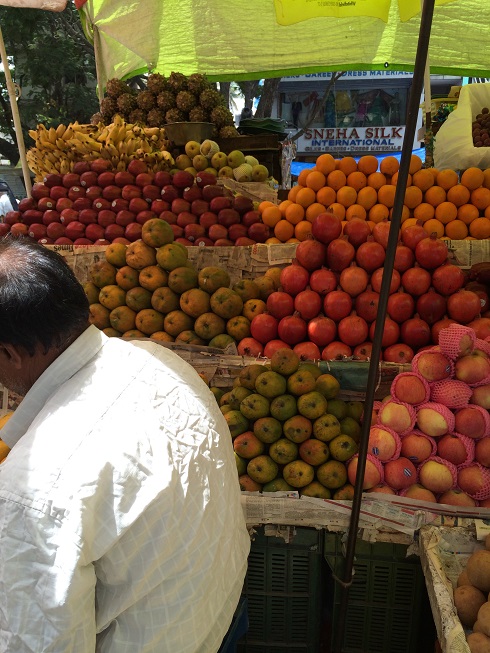
The apples and oranges seen in these pictures are imported. The apples from Washington state and Japan and the oranges from Florida.
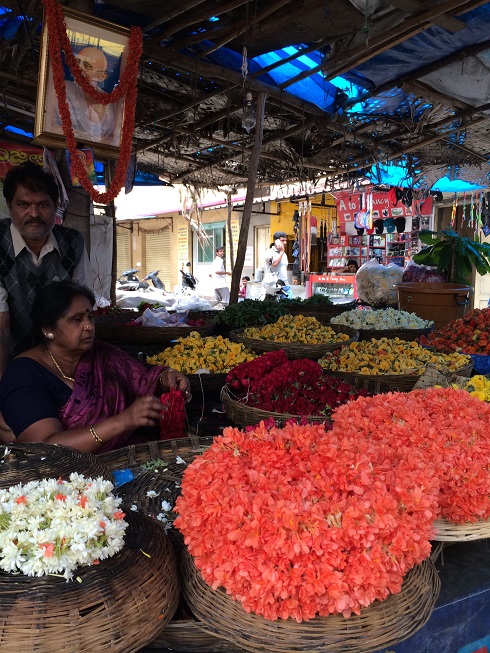
I was warned before I came that I would smell things I had never smelled before and that was true. It seems all the fruit here has a floral fragrance to them. It may be because the floral smells are so strong. At these jasmine/flower stands (and there were hundreds of them in Bangalore) the smell almost knocks you over. I use jasmine essential oils all the time, but the freshness of these flowers is almost indescribable. All I can tell you is that you just want to keep smelling them.
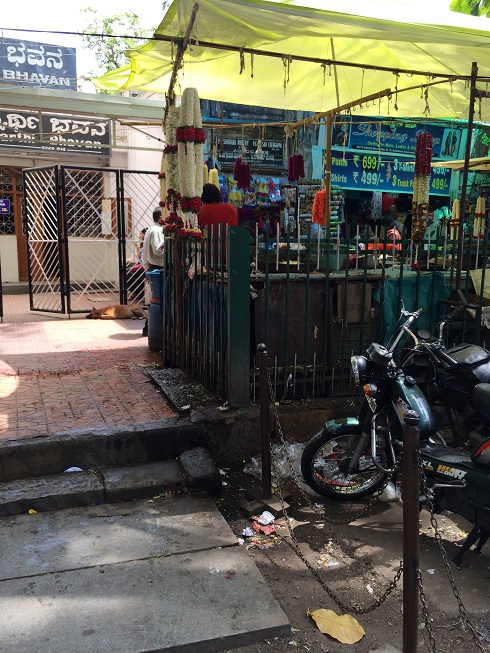
Ladies string these garlands and people decorate their houses with them, wear them in their hair and around their necks. You can see the garlands hanging in this hut (white and red). Prema says that you won’t see many “cut” flowers in Bangalore. She says she has a monthly contract with a woman (mostly women who are unable to find jobs) to deliver these garlands to her home every morning and at the end of the month, she pays her. Kind of like the way we used to (I guess some still do) have the newspaper delivered every day! How cool is that!
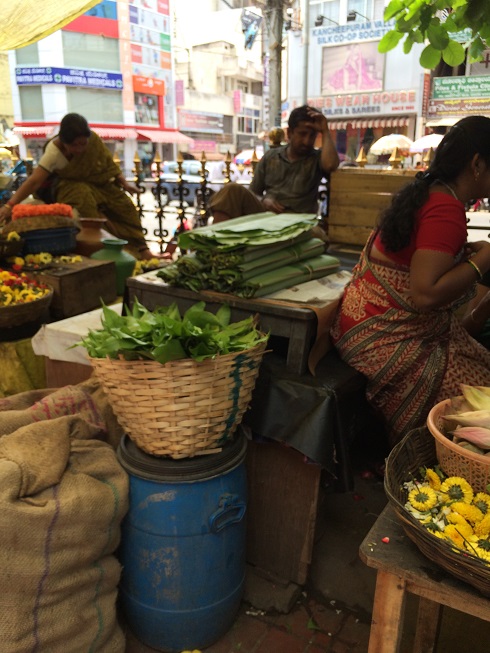
Leaves are also a big thing here. Banana leaves are used as plates. In restaurants, you go to the table and they set a banana leaf down and then place your food on it. They are antiseptic so there are no germs. Mango leaves are strung above doorways, especially in temples and during occasions at your home such as births and weddings.
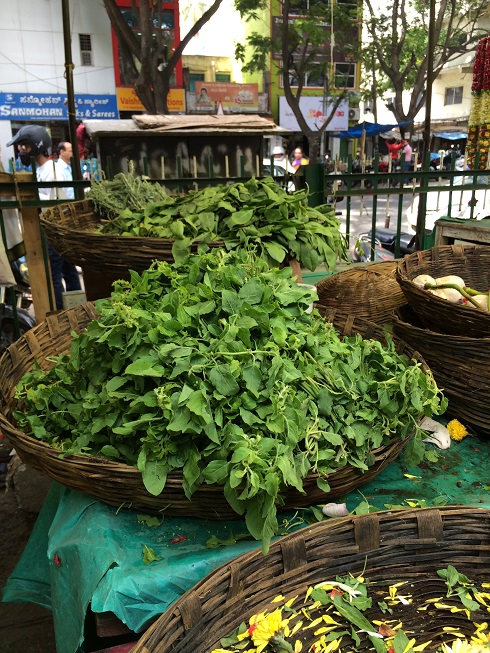
There were also carts of herbs. Here you see tulsi. The ‘tulsi’ plant or Indian basil is an important symbol in the Hindu religious tradition. The name ‘tulsi’ connotes “the incomparable one”. Tulsi is a venerated plant and Hindus worship it in the morning and evening. The presence of tulsi plant symbolizes the religious bent of a Hindu family. A Hindu household is considered incomplete if it doesn’t have a tulsi plant in the courtyard. Places that tend to inspire concentration and places ideal for worship, according to the ‘Gandharv Tantra,’ include “grounds overgrown with tulsi plants”.
Apart from its religious significance it is of great medicinal significance, and is a prime herb in Ayurvedic treatment. Marked by its strong aroma and a stringent taste, tusli is a kind of “the elixir of life” as it promotes longevity. The plant’s extracts can be used to prevent and cure many illnesses and common ailments like common cold, headaches, stomach disorders, inflammation, heart disease and various forms of malaria.
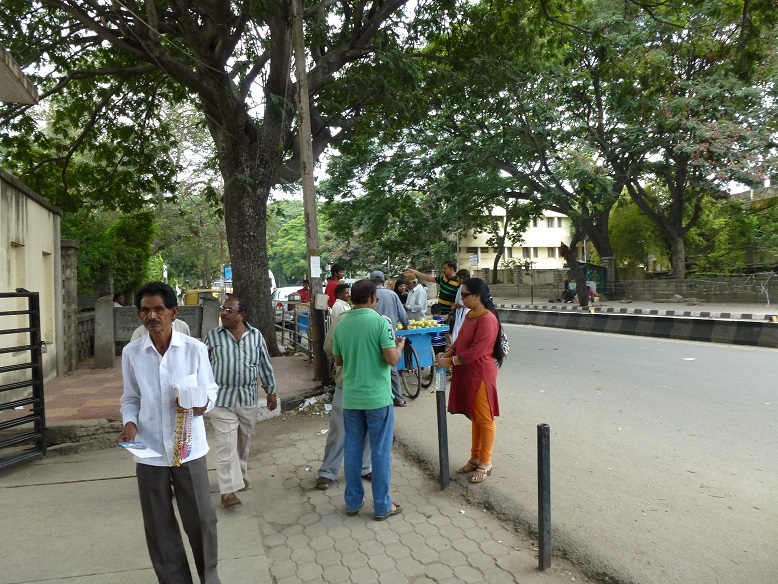
After our walk through the market, we called our driver Raj and he picked us up and drove us to your next stop, Tipu Sultan Palace. During this drive, and all the others for that matter, we saw street vendors.
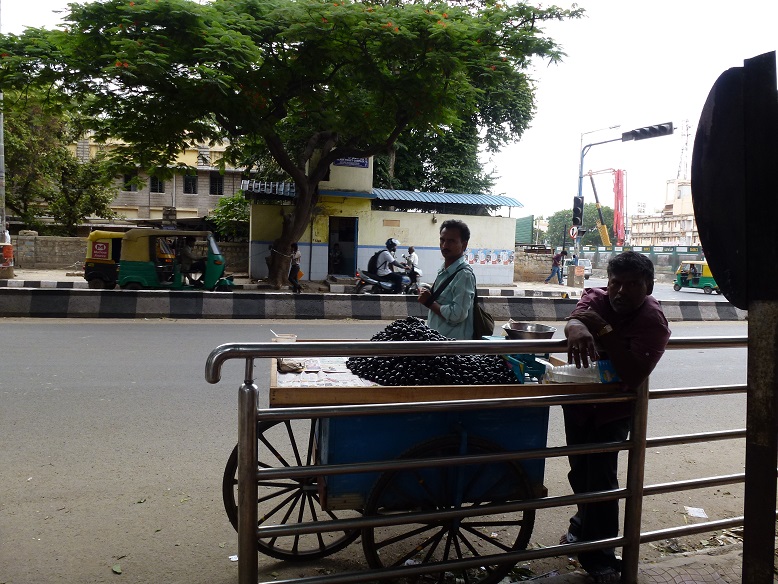
These street vendors may have had their offerings on carts or just on the ground. This man was right in front of the palace wanting to sell to the tourists. I was strongly advised not to eat anything off these carts, but I was curious to the fruit, as it looked like a black olive, but supposedly was very sour.
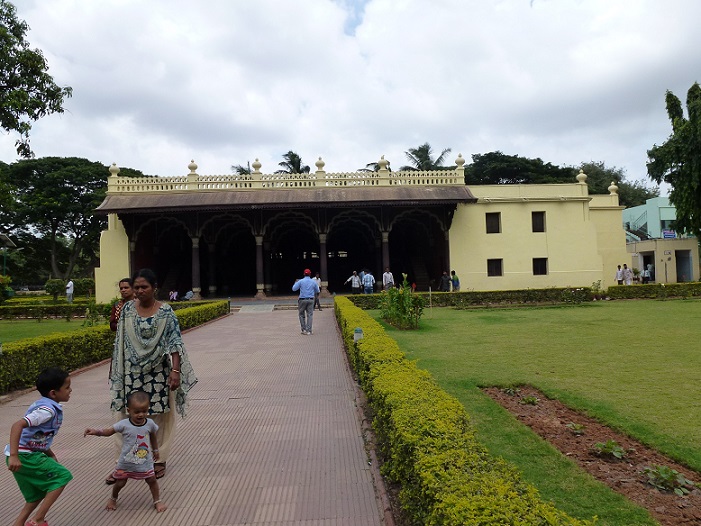
Sultan Palace-Tipu Sultan (20 November 1750 – 4 May 1799), also known as the Tiger of Mysore and Tippoo Sahib, was a ruler of the Kingdom of Mysore and a scholar, soldier and poet. Tipu was the eldest son of Sultan Hyder Ali of Mysore and his wife Fatima Fakhr-un-Nisa.
In alliance with the French in their struggle with the British, and in Mysore’s struggles with other surrounding powers, both Tipu and his father used their French trained army against the Marathas, Sira and rulers of Malabar, Coorg, Bednore, Carnatic and Travancore. During Tipu’s childhood, his father rose to take power in Mysore, and upon his father’s death in 1782, Tipu succeeded to a large kingdom bordered by the Krishna River in the north, the Eastern Ghats in the east and the Arabian Sea in the west.
Tipu Sultan wanted a “summer palace” and chose to build it Bangalore because it’s mild tropical weather. Cconstruction was started by Hyder Ali (his father) within the walls of the Bangalore Fort and completed during the reign of Tipu Sultan in the year 1791. After the death of Tipu Sultan in the Fourth Anglo-Mysore War, the palace was used by the British Administration as Secretariat before moving to Attara Kacheri in 1868.
Bangalore Fort provided safety for Tipu Sultan against the imposing British. But the armed forces, whom Tipu had grossly defeated twice before, became a more challenging opponent. In 1791, just one year after the completion of the palace, all that remained of Bangalore Fort was the palace and the armory. Today, the only part of the fort that still exists is the Delhi Gate, from which you enter the property.
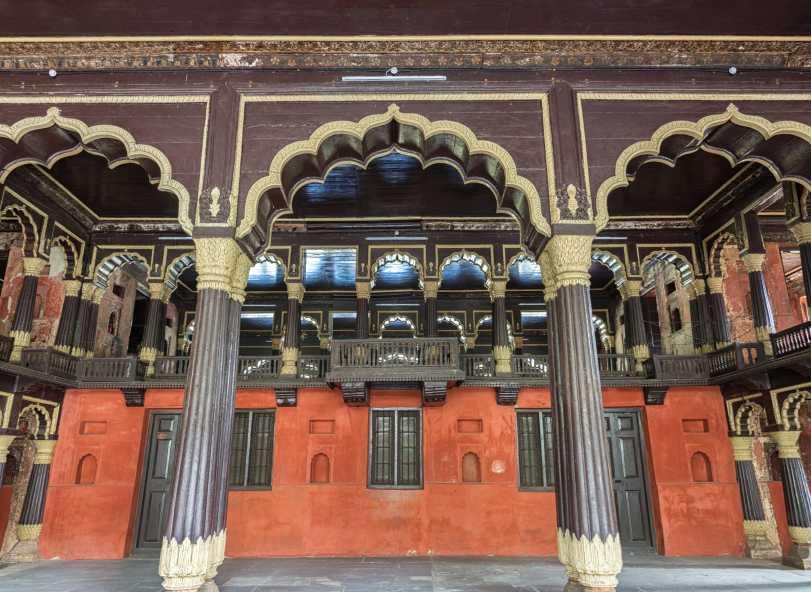
The palace structure, built primarily of teak wood, is a replica of his summer retreat Daria Daulat Bagh located in Srirangapatnam. The palace is two-stories of intricately carved arches, pillars and finely embellished balconies. It is an example of Indo-Islamic architecture. It is believed that Tipu Sultan used to conduct his durbar (court) from the eastern and western balconies of the upper floor. If you look right in the center of the picture, you can see one of these balconies. There are four smaller rooms in the corners of first floor which were used to known as Zenana Quarters or the area that housed women.
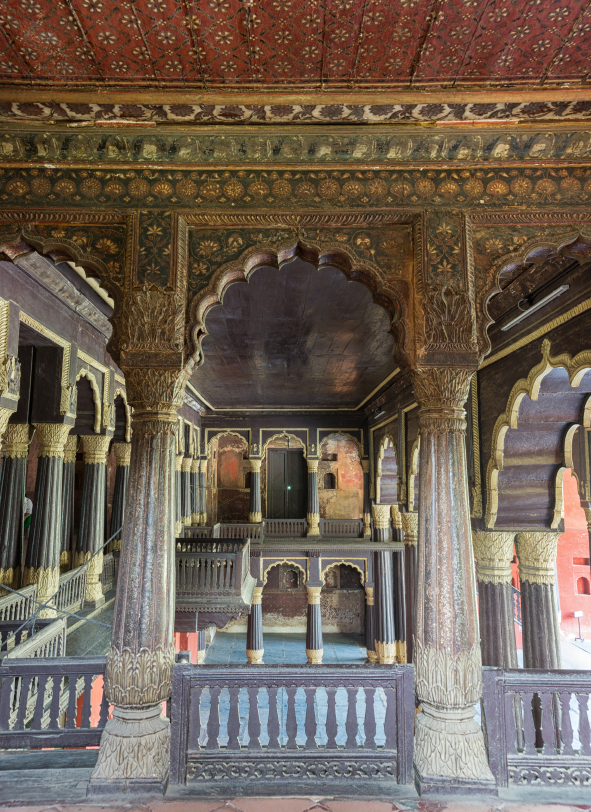
The beautiful floral motifs embellishing the walls of the palace are all but gone, not surprising given the palace’s age and the fact that after the administrative offices moved in 1868, it was used as a school for young children who helped in destroying the paintings.
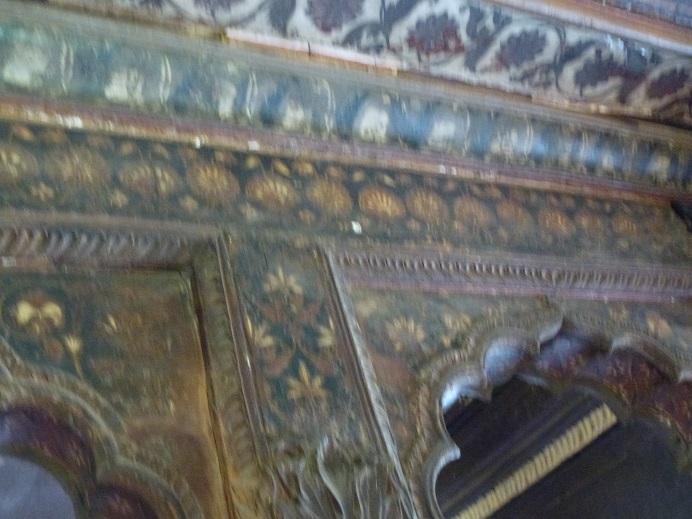
The rooms in the ground floor have been converted into a small museum showcasing various achievements of Tipu Sultan and his administration. There are newly done portraits of the people and places of that time. I noticed that there were many places we visited that displayed framed photos of the people who had onced inhabited the space. Much different than in Europe where you would see oil portraits, not photos. There is a replica of Tipu’s Tiger, which is presently in the Victoria and Albert Museum at London. The clothes of Tipu Sultan and his crown are present in silver and gold pedestals. The silver vessels given by a general to Hyder Ali is also displayed.
The site holds a painting of grand throne visualized by Tipu Sultan himself. Coated with gold sheets and stuck with precious emerald stones, Tipu had vowed never to use it until he completely defeated the English Army. Hence after the death of Tipu, the British Administration dismantled the throne and auctioned in parts since it was too expensive for a single person to buy it in entire piece.
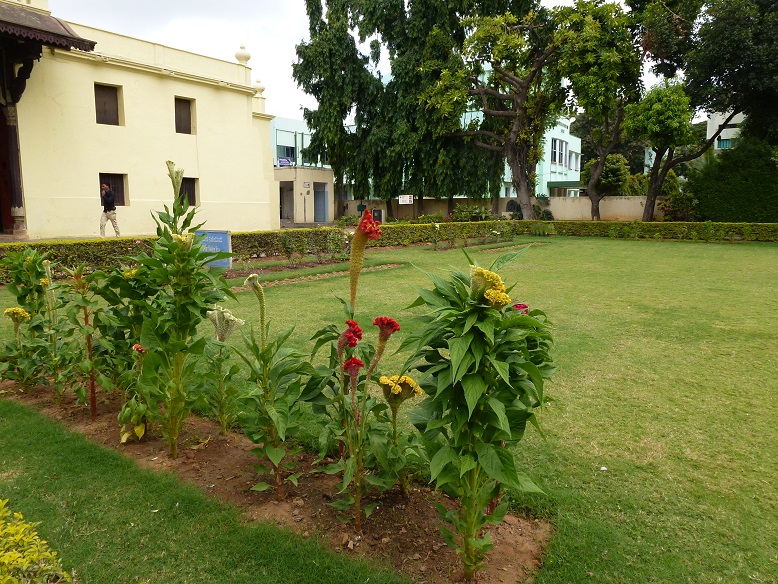
Gardens on both sides of the main pathway lead from the fort’s wall to the palace entrance. Brilliant pops of color are present as far away as the roadside.
What happened to Tipu? In the Third Anglo-Mysore War, Tipu was forced into a humiliating treaty, losing a number of previously conquered territories, including Malabar and Mangalore. He sent embassies to foreign states, including the Ottoman Empire, Afghanistan and France, in an attempt to rally opposition to the British. In the Fourth Anglo-Mysore War, the combined forces of the British East India Company, Maratha’s and the Nizam of Hyderabad defeated Tipu and he was killed on 4 May 1799, while defending his fort of Srirangapatna.
The Karnataka Government (as well as Pakistan) has been lately trying to portray Tipu Sultan as a State Hero. But outside the old region of Mysore, he is not thought of so kindly.
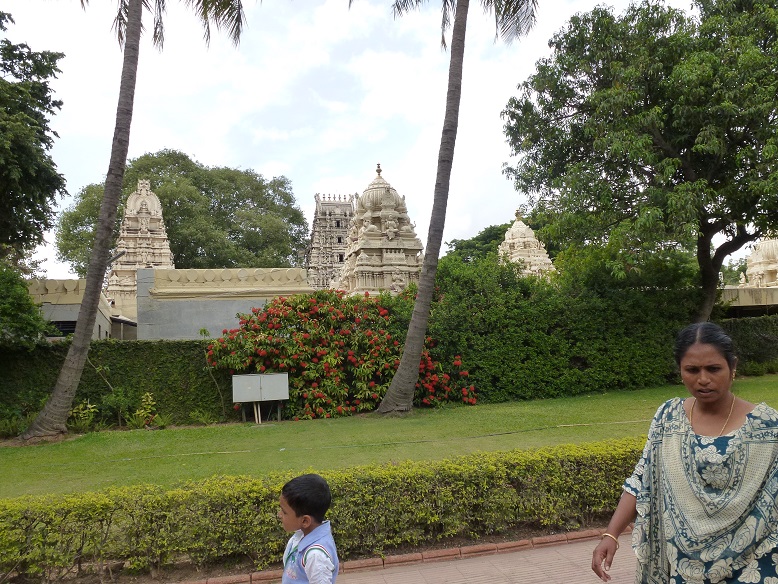
Next door to Sultan Palace was the Kote Venkataramana Temple. I have to interject here about the beauty of the woman in the picture. I found the women of India, dispite their age or obvious financial situation, to be so beautiful. I don’t know if it is because they are all so feminine looking with their long black hair parted down the middle and braided down their backs or if it was their colorful saris and gold jewelry. I could have easily taken 1000 pictures of different women all exuding true beauty. Anyway, back to the temple…
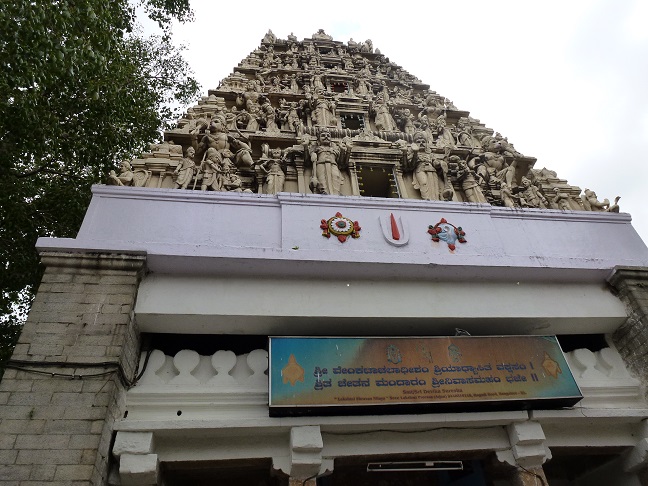
The temple consists of a sanctum (garbhagriha) which is connected to a central hall (mantapa) by a vestibule. The walls of the sanctum and vestibule (antechamber) are plain but for a row of deity sculptures in frieze at the base.
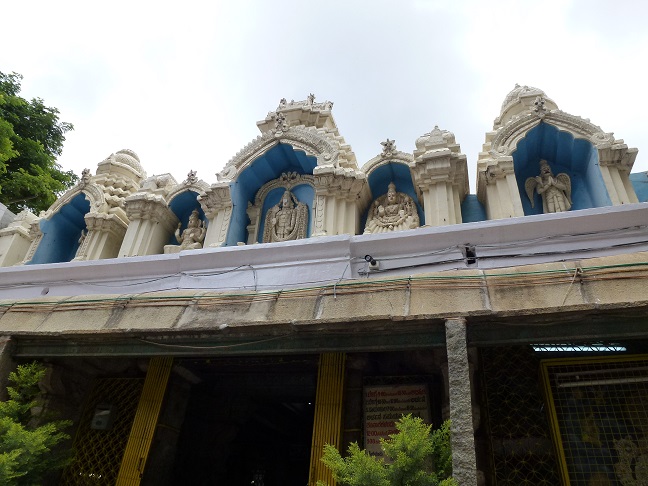
On the whole the temple seemed to be a little more decorated than the previous ones I have been to so far.
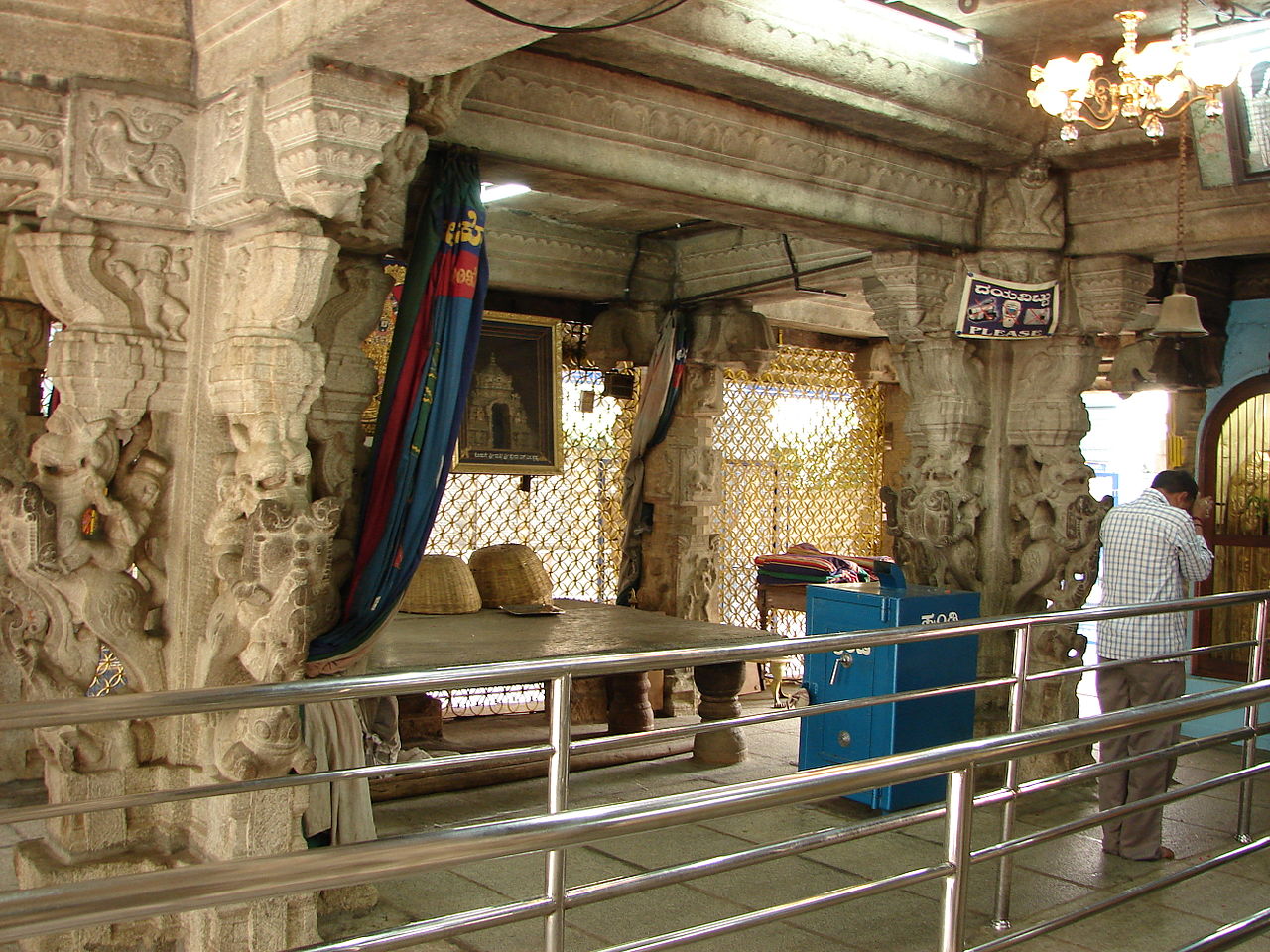
The hall ceiling is supported by pillars that have “clusters of colonettes” alternating with yalis (mythical beasts from Hindu legend) in all four directions. This appears on each of the central columns. There is a main festival celebrated each year called Vaikuntha Ekadashi. Thousands of people visit this temple during that time.
Stay tuned for the next blog where I visit the Bangalore Palace.
